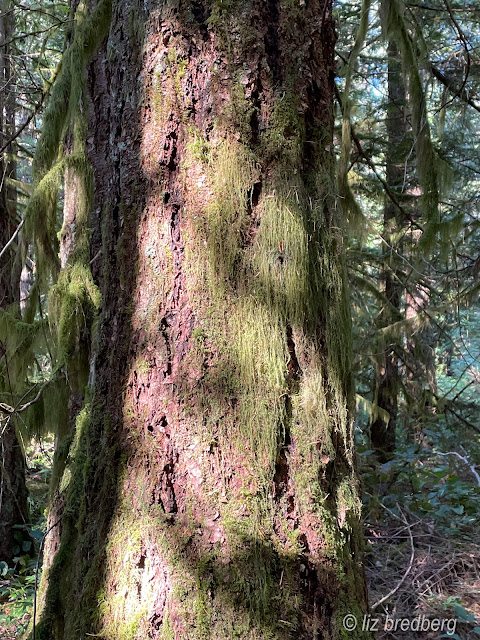2 September
A warm, hazy morning in the Wetlands and Forest, as is evident from this view of Arrowsmith. The drought persists. It is taking its toll on the vegetation, particularly the red cedars.
Despite the dry season, fungi are beginning to show. The stump we've been monitoring as a prime target for woodpeckers now has a new adornment.
Mosses continue to flourish.
I've been observing fallen trees as they break down. Some display what Terry Taylor, Parksville's botanical wizard, identifies as "brown cubical rot."
At a stage in its decomposition, a fallen tree loses its cellulose to decay, but the reddish cubical bits that remain, called "lignin," sometimes resist decay for centuries.
As I reported last week, the "piñata," a bald-faced hornets' nest, was demolished, apparently by a woodpecker (or woodpeckers) in search of grubs. We were surprised and impressed to find that it is being quickly rebuilt.
The water level in the marsh continues to sink,
although there is still water visible.
There is almost certainly water at the south end of the marsh as well, but near the dock, most of what is visible is either vegetation or mud.
After many efforts, my walking partner took this photo. We think it's a long-toed salamander larva.
There were very many very active dragonflies. None settled for photos. In the hardhack and willow at the fringe of the marsh, we heard what the Merlin app said was a common yellowthroat, but we never actually saw it.
On our way out of the forest, we found this damselfly, identified by iNaturalist as a spotted spreadwing.
Even in its dry condition, the Forest and Wetlands retain their beauty.

















Comments
Post a Comment